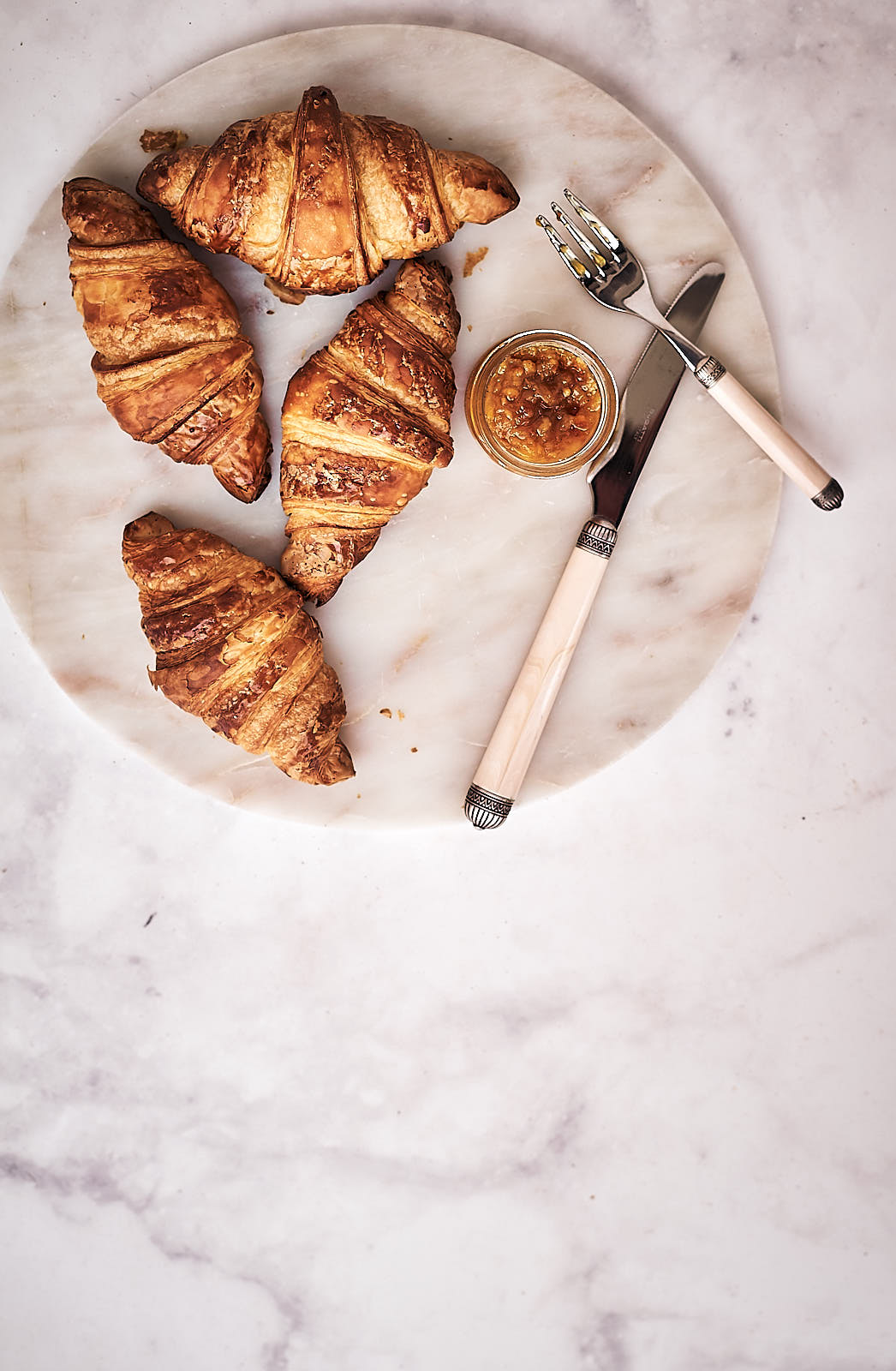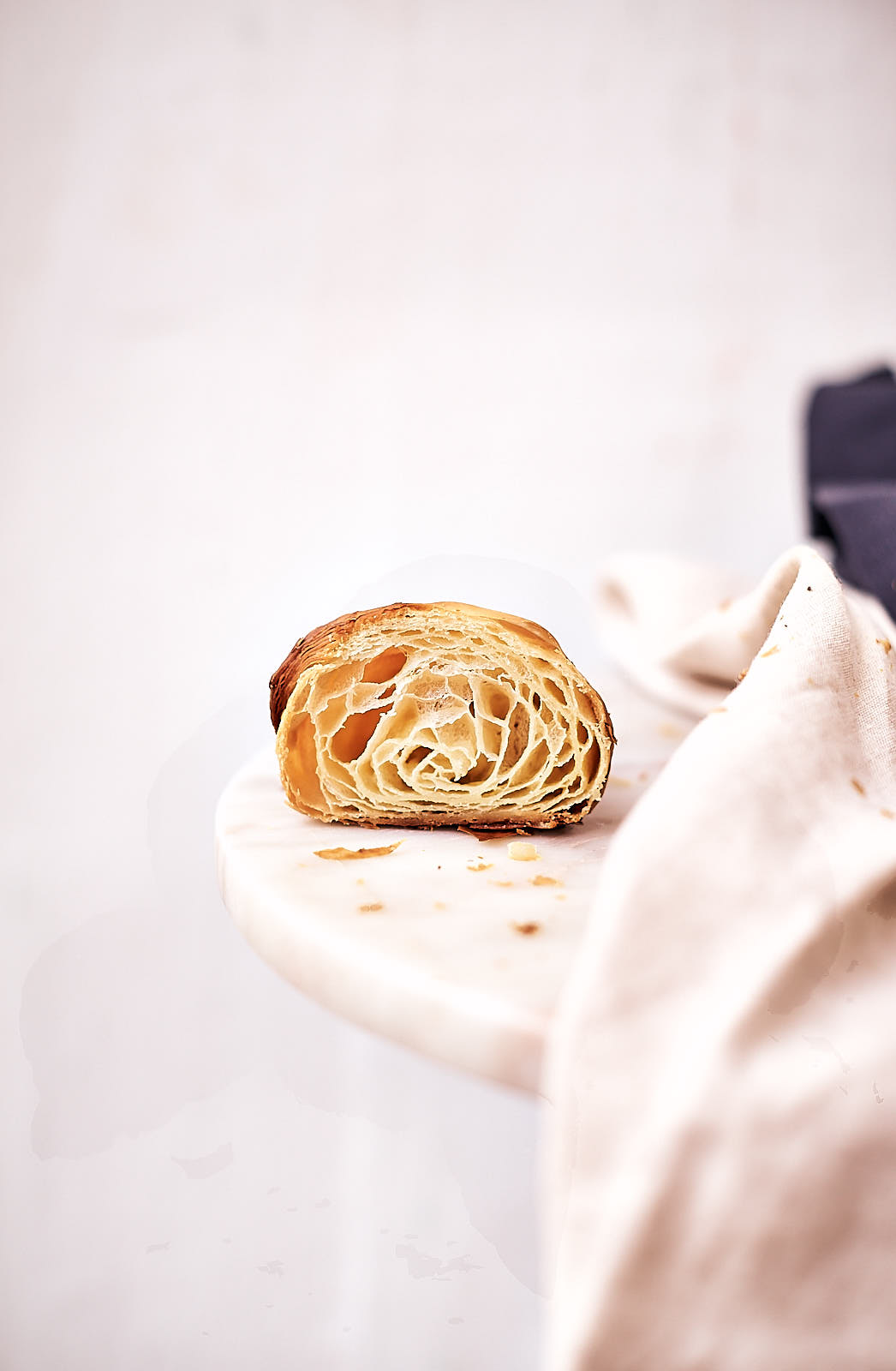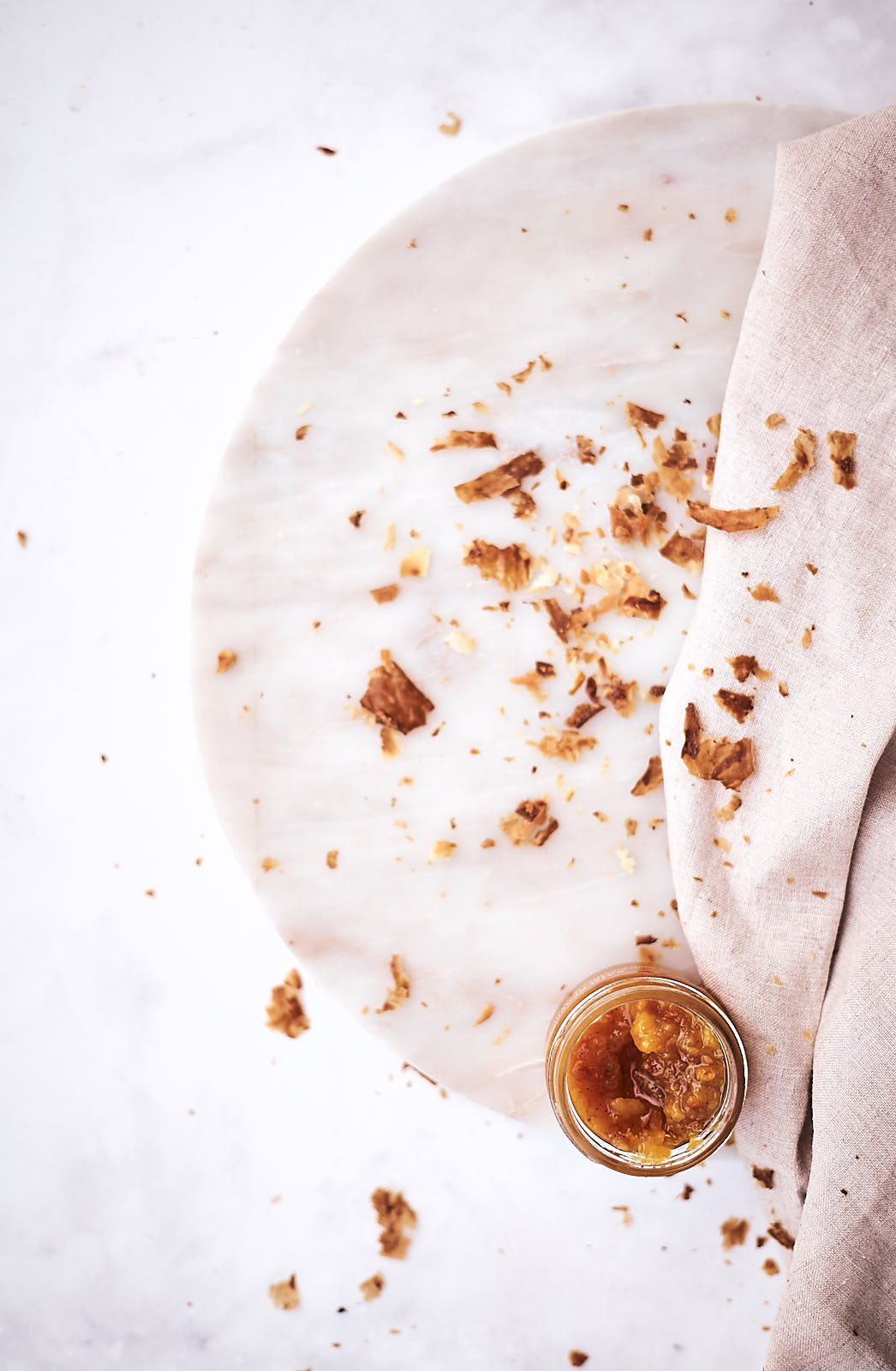The Croissant
Have you ever wondered how Paris smells in the mornings, especially close to the boulangeries that are baking their pastries and the air is filled with buttery and delectable aromas? I have never gone out that early, to smell that air, but I'm very good at imagining things and that is enough for me. The croissant, the same as foie gras, macarons, wine and snails, is a legendary French cuisine product that, sadly, has lost its high standards: not everyone knows how to make then, and not everyone who buys them knows what has to be in that croissant.
People have asked me what is the last food I would like to eat before I die, and, yes, believe it or not, it would be a croissant. Actually, the only thing. Packed with butter (no margarine), and more is better. It is all I would have – one, two, three – I have no idea how many, but I would just enjoy every bite, unfolding it like a ribbon (because good croissants just have to unfold like that).
Croissant, translated from French, means “half moon”. Because it is made form yeast puff pastry, it does not require folding like mille feuille, but it requires some other skills: knowing when the butter is the right temperature, when it is time to roll it in, how cold the table it stands and proofs on has to be. It requires the skill of patience that, sadly, not many have. It requires the art to be present and be ready to roll 1000 croissants before really getting it.
There’s no doubt, monsieur croissant, is the symbol of France. I believe no one would be against the idea to include the croissant on the flag. Just like Versailles, the Eiffel Tower, Bastille Day, and Les Trois Mousquetaires, it is something we associate France with, but do we know that the croissant actually comes from 17th century Austria, when The Ottoman Turks besieged the city? There's a legend (how there could not be one) that one night, bakers were getting ready for the next day. It was a dark night, and since yeast breads and pastries are made during the night, the bakers heard the Turks digging tunnels under the city. They alerted the guards and, unlucky for the Turks, they were discovered. Being a man with a good sense of humor (one might believe), baker Peter Vendler made bread in the shape of the half moon, laughing about the Turks and their symbol on the flag. But to be very honest, the croissant from those days had nothing to do with the one we love today, except for the shape. Even the name was different: then it was called kipferl.
Of course, as one might guess, there is another legend to be revealed. They say that after marrying Louis XVI, Marie Antoinette took her most important things with her to France, and as it happened, kipferl were one of them (I love her for that).
And let’s not stop at just two legends, because there is another. A pastry chef from Austria, August Cang, opened a boulangerie in Paris in 1839 selling a few things, one of them being the famous kipferl for the French to fall in love with. When butter was added and layers were created still remains a secret to be revealed, but in the meantime, there’s no reason to stop indulging in one of the most-adored pastries there is, and that, my friends, happened only because of the French, who did add butter and changed the dough from Austrian to brioche and developed it even more.
As you might know, there are million versions of croissants all over the world. Nowadays, most try to copy the French version and are terrible at that by trying to make more and cheaper. Eat more for less, with margarine sticking to the roof of your mouth after eating; with layers to be imagined, not seen; with crispiness to be sought for somewhere else. Just so you know, there are some examples in every country to try, but you have to be ready for something other than what you get in France or in classic French boulangeries. For example, in Switzerland they make them very sweet and call them Gipfe. In Italy, they are puffier and much sweeter, coated with a layer of sugary syrup and sometimes filled with creams one has never heard of – they are known as cornetto in the south and middle of Italy and brioche in north, but sfoglia all over. When buying them in Latin America, be prepared to have them either sweet with sugar, called medialuna, or savoury filled with lard called medialuna da grasa.
So then, what is a good croissant?
So, at a time when everyone (from small bakeries to big factories) has understood the temptation of the croissant, we buyers must know that there are, as mentioned above, croissants that sweep you off your feet for two reasons – either they are terrible or excellent. An excellent croissant is one that has:
Crispy outer layer. Light, pale exterior means either that the baker does not know what he's doing with the dough (maybe someone was in hurry to take them out of the oven too early) or the croissant is Stale and not fresh.
Layers (not layered). If you cut the croissant right in the middle and open it up, there should be layers of moist dough. Layers that, if you start from one point, open up like a long ribbon.
Holes. Yes, there is no croissant without holes. They have to be proportional, beautiful, neat, and sexy. What happens to the yeast in the pastry is that it releases gas and makes the croissant puff up, as expected.
Aroma. Only the best butter, flour, some nuts, and milk. It’s all there, just that. Pure and simple.
So, as much as we (and by that I mean me) would love for croissants to be easy to make, they are not and never will be. They are a thing to master with patience and practice, with the right butter, the right technique, and love for what you do. One day I will master them, when I’ll have grandchildren to feed until their cheeks shine in the dark, but until then, I’ll just stick to the ones made by the masters. All over the world.
Recipe and pictures: Signe Meirane
Camera: Sony Alpha 7s







